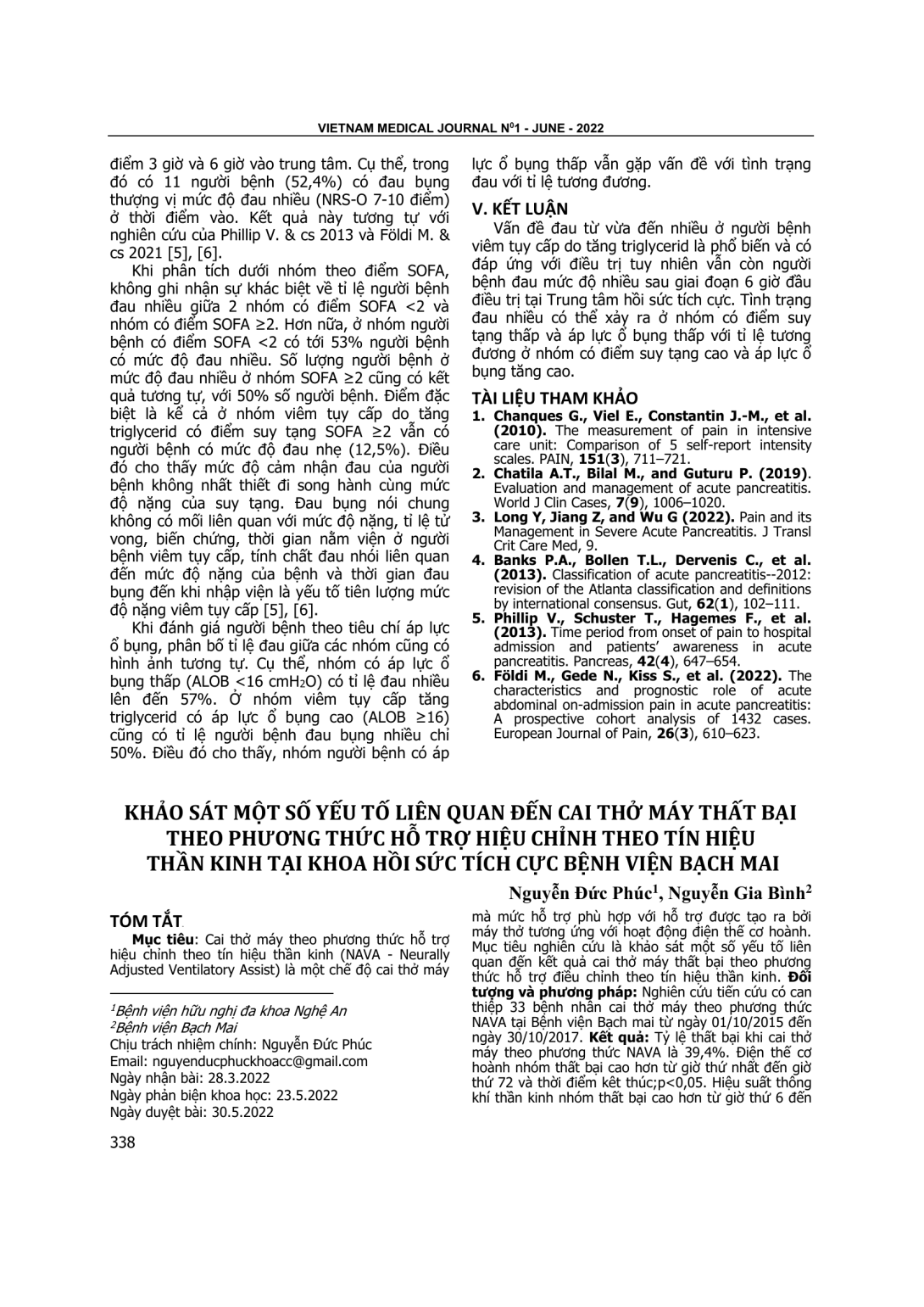
Cai thở máy theo phương thức hỗ trợ hiệu chỉnh theo tín hiệu thần kinh (NAVA - Neurally Adjusted Ventilatory Assist) là một chế độ cai thở máy mà mức hỗ trợ phù hợp với hỗ trợ được tạo ra bởi máy thở tương ứng với hoạt động điện thế cơ hoành. Mục tiêu nghiên cứu là khảo sát một số yếu tố liên quan đến kết quả cai thở máy thất bại theo phương thức hỗ trợ điều trị theo tín hiệu thần kinh. Đối tượng và phương pháp: Nghiên cứu tiến cứu có can thiệp 33 bệnh nhân cai thở máy theo phương thức NAVA tại Bệnh viện Bạch mai từ ngày 01/10/2015 đến ngày 30/10/2017. Kết quả: Tỷ lệ thất bại khi cai thở máy theo phương thức NAVA là 39,4%. Điện thế cơ hoành nhóm thất bại cao hơn từ giờ thứ nhất đến giờ thứ 72 và thời điểm kết thúc;p<0,05. Hiệu suất thông khí thần kinh nhóm thất bại cao hơn từ giờ thứ 6 đến giờ thứ 48 và thời điểm kết thúc ;p<0,05. Mức NAVA nhóm thất bại cao hơn từ giờ thứ nhất đến giờ thứ 24 và thời điểm kết thúc;p<0,05. Kết luận: Tỷ lệ thất bại khi cai thở máy theo phương thức NAVA là 39,4%, các yếu tố gồm điện thế cơ hành, mức NAVA, hiệu suất thông khí thần kinh có ảnh hưởng đến kết quả cai thở máy NAVA.
Neurally Adjusted Ventilatory Assist (NAVA) is a mode of mechanical weaning in which the level of support is matched to that produced by the ventilator in proportion to the activity diaphragm potential. The objective of the study was to investigate a number of factors related to the failure of mechanical ventilation weaning in a supportive way to modulate neural signals. Subject and method: Prospective interventional study of 33 patients weaned from mechanical ventilation by NAVA at Bach Mai Hospital from October 1, 2015 to October 30, 2017. Result: The failure rate of weaning from mechanical ventilation according to the NAVA method was 39.4%. Diaphragmatic potential was higher in the failure group than in the successful group from hour 1 to hour 72 and the end time (p<0,05). Nerve ventilation performance in the failure group was higher than in the successful group from the 6th to the 48th hour and the end time (p<0,05). The NAVA level in the failure group was higher than in the successful group from the 1st to the 24th hour and the end time (p<0,05).Conclusion: The failure rate when weaning from mechanical ventilation according to NAVA method is 39.4%, factors including muscle voltage, NAVA level, neuroventilation efficiency have an influence on the outcome of NAVA weaning.
- Đăng nhập để gửi ý kiến
